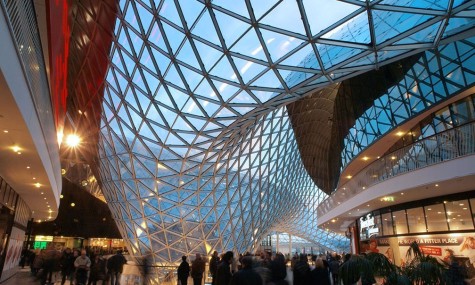Information carrier architectural glass as a pioneer for Industry 4.0
Motivation
In addition to the traditional function of architectural glass, namely protection against external influences while providing transparency for daylight, the range of functions is expanding to include thermal isolation, static load-bearing functions and even photovoltaic energy generation. The individuality of these products is as great as the individuality of the applications (see figure 1). The expansion of the range of functions and the individuality of glass products necessitates the need for a complete and consistent proof of quality, as can be seen from the 2011 amendment of the construction products ordinance. In this research project, a system for laser marking on architectural glass is being technically developed and integrated into the cutting of the glass finishing process.
Objective and procedure
The potentials of this future individual labelling result from the departure from the currently common batch tracking and from the increase in process reliability due to the elimination of the adhesive labels used so far. The exact knowledge of the condition and progress of the products in real time, made possible by reading stations on the production equipment, leads to increased transparency in production. Camera systems can check dimensional tolerances, drill holes, etc. within seconds and compare them with the target specifications that are linked to the component identification. Quality and inspection records are directly linked to the individual product and can be checked over the entire life cycle, e.g. for better product containment in the event of defect detection or to counter any recourse claims that may arise. This research project is thus starting with the vision of Industry 4.0 by realising the prerequisites for a real-time-capable and transparent production process. The PTW is developing the concept for single-pane quality and performance verification covering the entire supply chain of architectural glass.







